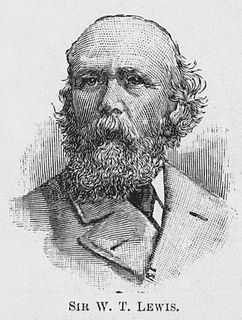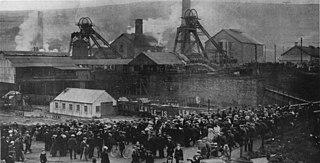
The small village of Aberbeeg lies in the county borough of Blaenau Gwent in Wales, within the historic boundaries of Monmouthshire. It is part of the community of Llanhilleth. The two main tributaries of the Ebbw River, the Ebbw Fawr and Ebbw Fach converge at Aberbeeg.
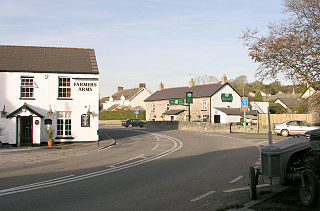
Aberthin is a small village, just outside Cowbridge in the Vale of Glamorgan, South Wales, on the north side of a shallow valley, less than a mile northeast of Cowbridge across the A48 road. Cowbridge Comprehensive School lies just to the southwest of the village. About 250 metres to the south is an old quarry, with a "faulted strip of grey oolite". Aberthin is also the name of a brook, the River Aberthin. The village was served by the Aberthin Platform railway station between 1905 and 1920, now a field to the west of Aberthin.

Ferndale is a small town located in the Rhondda Valley in the county borough of Rhondda Cynon Taf, Wales. Neighbouring villages are Blaenllechau, Maerdy and Tylorstown. Ferndale was industrialised in the mid-19th century. The first coal mine shaft was sunk in 1857 and was the first community to be intensively industrialised in the Rhondda Valley.
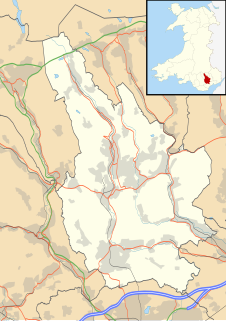
Pengam is a former coal village and community in the Rhymney Valley, Caerphilly county borough, in Wales. It is also a community, containing itself and the nearby village of Fleur de Lys, and at the 2001 census it has a population of 3,842, rising slightly to 3,848 at the 2011 Census.

Van is a suburb and community in Caerphilly county borough in Wales, situated in the east of the town of Caerphilly. It contains the vast housing estate of Lansbury Park and the estates of Porset Park, Castle Park, Mornington Meadows and Badgers Wood. Van mainly consists of residential properties, one industrial estate and only one public house - The Fisherman's Rest. Nearly all of the property in Van is of post war construction. The area is served by one large primary school - St James. The same name is given to the electoral ward of Caerphilly County Borough council that also covers Van. According to the United Kingdom Census 2001 Van had a population of 5,050.

Kilgetty is a village immediately north of Saundersfoot in Pembrokeshire, Wales, at the junction of the A477 between St. Clears and Pembroke Dock and the A478 between Tenby and Cardigan.

Brynsadler is a small village situated in Rhondda Cynon Taf, Wales, it is part of the community of Pontyclun.

Ynysmaerdy is a village near Talbot Green and Llantrisant in Rhondda Cynon Taf, Wales. Even though there is no direct access to the village of Llanharan, due to older parish boundaries it falls under the community of Llanharan. It is home to the Royal Glamorgan Hospital.
Llanbethery is a small village in the Vale of Glamorgan, south Wales. It is part of the community of Llancarfan.

Pentre is a village, community and electoral ward near Treorchy in the Rhondda valley, falling within the county borough of Rhondda Cynon Taf, Wales. The village's name is taken from the Welsh word Pentref, which translates as homestead, though Pentre is named after a large farm that dominated the area before the coming of industrialisation. The community takes in the neighbouring village of Ton Pentre.
Noah Ablett was a trade unionist and political theorist who is most noted for contributing to 'The Miners' Next Step', a Syndicalist treatise which Ablett described as 'scientific trade unionism.
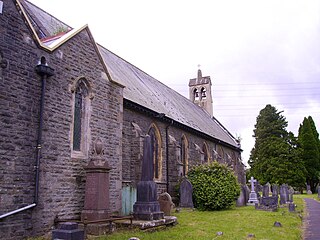
Hopkinstown is a small village to the west of Pontypridd town centre in the county borough of Rhondda Cynon Taf, Wales situated alongside the banks of the River Rhondda. Hopkinstown is a former coal mining industrial community and is a district in the town of Pontypridd within the Rhondda electoral ward. It is neighboured by the settlements of Pwllgwaun, Trehafod and Pantygraigwen, and also comprises the subdistricts of Troed-Rhiw-Trwyn and Gyfeillion.
The Miners' Next Step was an economic and political pamphlet produced in 1912 calling for coal miners through their lodges, to embrace syndicalism and a new 'scientific' trade unionism. The pamphlet was written by the 'Unofficial Reform Committee' a group of syndicalist and socialists involved in the Plebs' League and the Cambrian Combine strike of 1910-11. The main author is recognised as Noah Ablett.
Ferndale Colliery was a series of nine coal mines, located close to the village of Ferndale, Rhondda Cynon Taf in the Rhondda Valley, South Wales.

Ogmore Valley is a community in the Bridgend County Borough, Mid Glamorgan, Wales. Made up of the villages of Nantymoel, Ogmore Vale, Price Town and Wyndham, its population at the time of the 2001 census was 7,800, increasing to 7,954 at the 2011 Census. The ribbon housing of the valley follows the Ogwr Fawr tributary which rises at Craig Ogwr and joins the Ogwr Fach at Blackmill.

Crosskeys is a village, community and an electoral ward in Caerphilly county borough in Wales.

Coychurch Higher is a community in Bridgend County Borough, south Wales. It covers the westerly area of the county north of Pencoed and south of Ogmore Vale. The community is sparsely populated and contains only one settlement, the small village of Heol-y-Cyw, which is located on the southerly border of the community. The majority of the community is made up of hilly terrain populated by several farm houses. It was once the site of Wern Tarw Colliery, the site of the first major coalminers' strike post-nationalisation of the coal industry.





